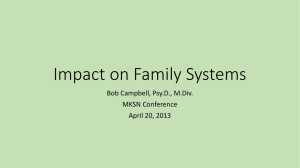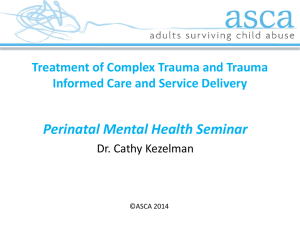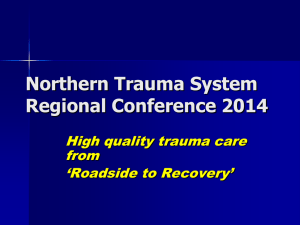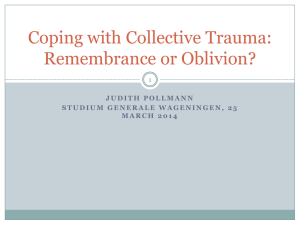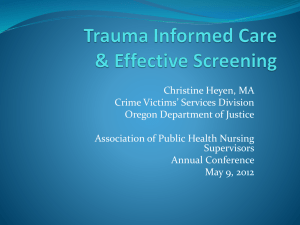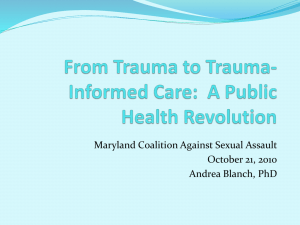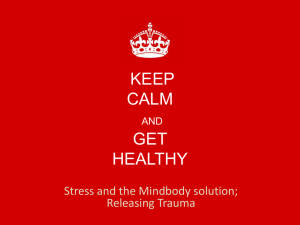Inequities in Emergency care and the ACA
advertisement
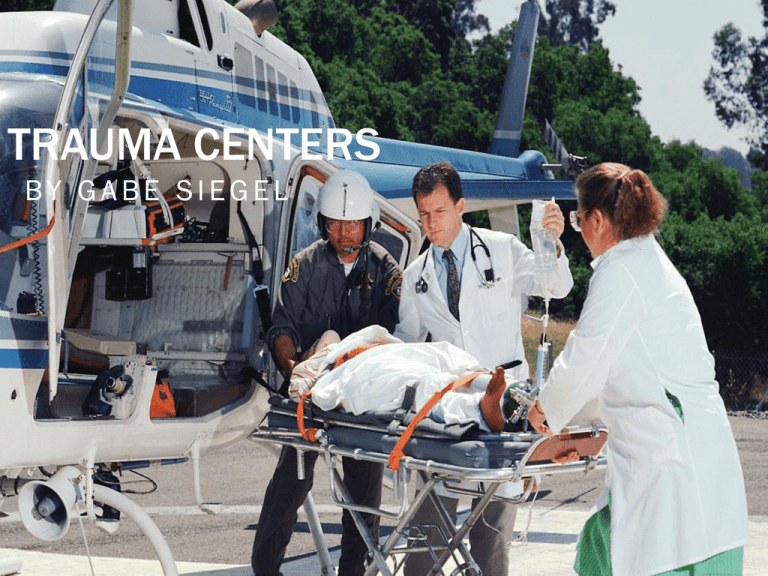
TRAUMA CENTERS BY GABE SIEGEL SHORT ANECDOTE Example: US Congressman Bobby Rush’s son was shot and killed on the same block as a Hospital, yet he was driven 10.3 miles to the nearest trauma center. STATE OF EMERGENCY MEDICINE EMTALA and the ACA Insurance ≠ Access: shortage of Primary Care physicians ACA increases demand for resources Poor reimbursements, uncompensated care, and utilization issues Importance of Trauma centers and systems Under the ACA: $224 million in grants for Trauma Centers TRAUMA Trauma-mostly severe and critical injuries. Trauma is predictable Injury is the leading cause of death for individuals from ages 1 to 44 Accounts for approximately 170,000 deaths each year and over 400 deaths per day 35 million people are treated annually for trauma -one hospitalization every 15 minutes. QUICK FACT For every $3.51 the federal government spends on HIV research and $1.65 for cancer, trauma gets 10 cents. And this is true despite the fact that someone dies from a traumatic injury every three minutes in the United States. Compared to every 9.5 minutes someone is infected with HIV/AIDS in the U.S. DEFINING THE PROBLEM 25 % of Trauma Centers have closed in the U.S Disproportionately burdens vulnerable populations 46 million Americans lack access to a trauma center. “Trauma Deserts” Access to a trauma center reduces risk of death by 25% The interests, individuals, ideas, institutions TRAUMA SYSTEM COMPONENTS 911 Access Pre-Hospital Providers Hospital EDs Trauma Centers Rehabilitation Centers Trauma Registry and Injury Prevention TRAUMA CENTER LEVELS Level 1- 24/7 emergency care capable of providing care for any injury. Leader as a research institution. Level 2- 24/7 essential care. Level 3- 24/7 emergency physicians, key services, prompt availability of surgery staff, and transfer agreements. Level 4- 24/7 physician coverage. Transfer agreements. TRADE OFF PARALLELOGRAM Cost Quality Equity Access POLICY PROPOSAL Recognizing trauma systems as a public good National Trauma System Linking funds to Trauma center availability Increased and new modes of funding for EMS and Trauma Centers Changing reimbursement Activation Fee Alternative payment model that incentives quality outcomes and cost-effective care Stopping “defensive medicine” OUTCOMES AND OBSTACLES Funding Public and professional support and policy lightening Lowering mortality rates Maintain and improve cost, quality, access, and equity Prevention of Trauma Center closures Reducing “trauma deserts” Preparation for a major terrorist attack or disaster TRAUMA MAP http://www.traumamaps.org/Trauma.aspx



